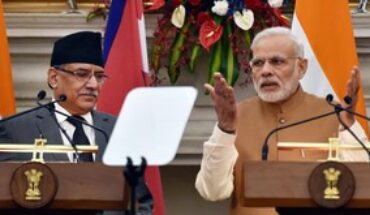80 crore people are given food security for months and now after the end of long agitation of farmers the central govt. is silent about making a law on MSP (Minimum Support Price) and a central minister says that it is not possible to pay MSP. Farmers will be panelized to pay the cost of overproduction and ultimately they are thrown amid free market forces as the market price of food grains is less than MSP. Moreover, they give an argument that If govt. purchases all production on MSP it would cost 17 lakh crore which is half the amount of the union budget. Someone is playing with data. Food production is not a waste which will be thrown or dumped. The government would compensate the farmer only the difference between the market price and MSP, not the whole MSP. Wrong interpretation of the data as according to the whole MSP of the crop creates confusion among common men. Moreover, the farmer is producing to feed the population of the nation. The question arises that if you have enough to eat then why GHI is going down and even ranked below Bangladesh and Pakistan. Indian people know hunger well. A food grain surplus nation cannot rank as low as India in the Global Hunger index. The common myth that we are the huge producers of food grains and export a big amount of food grains may be because we are exporting more and consuming less. The per-capita consumption of grains started declining in 1990 and this trend continued in later two decades and a recovery in 2011 -2020 unfortunately, this decline was not taken seriously as academicians interpret it according to the Lorenge curve that with increasing income a consumer diversifies his consumption and spends a lesser amount on the consumption of food grains and more on fruits, nuts and animal products. But in the case of India, this doesn’t happen as proven by GHI and malnutrition among children. If demand disappeared or declined for food grains, where did the grain go ?. For the last ten years, India has emerged as a big cereal exporter and we are not a food surplus state but consume fewer food grains. There is no authentic surplus food grain in the country. Any surplus visible in the forms of large exports and overflowing FCI stocks can be attributed to the fact that the average Indian was not able to maintain her already low level of grain consumption over the last thirty years. Needless to say, this ‘average Indian’ is located far away from the glittering lives of the metropolitan cities and invisible from the world of policy-makers. 196 million people are undernourished and malnutrition is the top cause of death and disability. It is clear that food security remains a serious challenge. India now ranks 101 out of 116 countries in terms of hunger and continues to be in the ‘severe’ hunger category according to the GHI of 2022. These situations clearly prove that food is not accessible in India. South Asia has the highest child wasting rate of any region, and India is the worst performer. At 17.3%, India’s child wasting rate is only slightly better than it was last year, at 20.8%.
MSP is a crucial and key issue for food security and the survival of agriculture as it works as a social safety net for farmers. The unpredictability of agricultural yields and products often results in windfall losses making the lives of farmers debt-ridden and pathetic. The economic decisions involved in agriculture are massive and need to be recognized as such. The demand for Minimum Support Prices (MSP) is directly linked to food security in India. Hence, farmers have a rationale and urgency in seeking govt attention towards their economic well-being as made or marred by new agricultural legislations of the central govt. For instance, students of economics are familiar with the COBWEB theorem. A farmer has to take the decision to produce a particular crop minimum of six months before marketing so then an assurance of minimum support price is a must in agriculture. Every industry can increase or decrease its production according to the demand in the market but a farmer can not as he has sown the crop six months before, it reaches to market and the standard law of demand and supply of Dr Marshall does not work in food production. A farmer never knows what will be market and weather conditions in the coming next 5 to six months. Cobweb theorem describes this dilemma of a farmer. How the market forces and nature play a major role in deciding the price of agriculture products as two third of total land has no irrigation facilities in our country. A farmer can be ruined because of a lack of demand and low prices. Even plenty of production can also ruin him when the price falls because more production when supply surpasses demand and equilibrium price falls. This is called poverty in prosperity in economics. Even the developed capitalist economies, where the free market supposedly rules, highly subsidize their farming communities. So the assurance of MSP is a must for the crops. Govt gives MSP only for 23 crops and only 6% of the total crop is sold on MSP because of loopholes in govt. marketing policies. The boom and bust of agriculture will be solved when we shift from state domination to individual freedom
Dr. Harvinder Kaur, SD College Ambala , vews are personal





